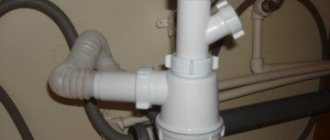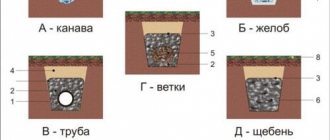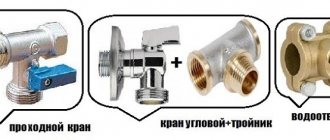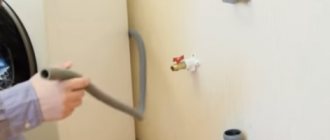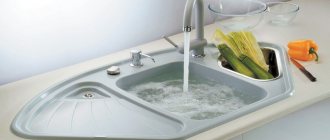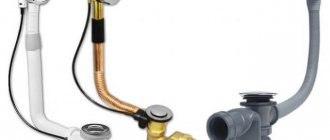Connecting a machine to the sewer system remains a hot topic, as many still solve it in different ways. Some pour the waste liquid from the machine into sinks, others into the toilet, bathtub or shower trays. Owners who have carefully read the manufacturer's technical instructions drain the water into the sewer using a washing machine siphon.
Purchasing a modern machine gun is not an ordinary event for many families. Having such a unit, washing will take much less time. There will be an opportunity to spend the freed hours on other useful and enjoyable things. But do not forget that for subsequent operation of the equipment, dirty water must be drained into the sewer.
Draining dirty water into the sewer through a siphon
Connecting the washing machine drain
Siphon - element of the connection system
How to properly connect a washing machine
The washing machine hose is connected to the siphon
Purpose of siphons
The purpose of this device is not only to limit access to the room of the disgusting smell from the sewer pipe. Siphons for draining liquids have many more functions:
- Protection against putrefactive and pathogenic bacteria formed from the decay of organic waste;
- Prevents the penetration of sewer odors and noise from this system thanks to a water seal;
- Preventing clogging and clogging of the sewer with debris that enters the pipe with water;
- Easy and simple access for cleaning as needed;
- Simplify the operation of the water pump due to a short hose.
The absence of a drain siphon in a washing machine can bring a lot of additional worries. It is partially possible to get away from them if you hang the drain hose at a height in a curved form and connect it to the sewer, creating a water seal, but this will require its extension. This method will only eliminate the depressing smell, so this path is considered incorrect. In addition, the outlet of the sewer pipe to create an air gap must be located quite high, at least 500 mm above the floor, which does not look aesthetically pleasing.
Theory
What is it needed for
During washing, the siphon processes the water that comes from the tank to drain through the drain hose. There are at least three more functions, the absence of which you will definitely feel:
- The device creates a water seal - a water plug between the bathroom and unpleasant odors from the sewer. The plug blocks the desired area in the pipe along its entire diameter, hermetically closing the passage of foul-smelling gases, even when the machine does not drain the water.
- At the same time, the spare part practically eliminates traffic jams in the system itself - and if a problem does occur, it allows you to easily fix it. Some models filter out large debris - coins, receipts, pins, buttons, rings, hairballs. This reduces the likelihood of sewer blockages to zero and helps to find the loss.
- The siphon reduces the load on the pump, which keeps the part in working condition much longer.
Often the drain hose is connected directly to the sewer or other drains - to the bathroom, sink or toilet. Connecting like this all the time is useless and dangerous:
- The hose will not create a water seal on its own; the pipe will have to be bent into an S or U shape.
- If you connect the hose directly to the sewer, you will not get rid of odors, and the corrugated casing will quickly become unusable under stress.
- The resulting “pump” often has to be expanded, because a sealing plug is not created in short pipes. This increases the load on the hose, and a leak may begin at the attachment point.
In general, the hose should only be used directly for short periods of time and in extreme cases. It is much safer and quieter to install a siphon.
Which one is better to choose?
The most popular brands are Bonomini, McAlpine, ITAP (ITAP), TECE, Alcaplast, Geberit, Grohe, RBM, Viega and ANI Plast. There is no clear solution for choosing a siphon. You can only compare each of the proposed types and choose a more suitable option for your apartment. We will discuss all types below.
Operating principle and device
A siphon is a useful and necessary invention that eliminates the additional hassle of sewer maintenance and reduces the load on the pump. It’s not for nothing that experts say that it is needed, since the product is structurally designed to create a water seal. A siphon is a pipe with a curved channel filled with a certain amount of liquid, which reliably blocks the exit of gases after draining the wastewater into the discharge system . The constant presence of a water plug in this product blocks the access of everything unnecessary (odors, insects) from the sewer network.
Siphons are used to connect washing machines to the drainage system; in addition, using these products you can connect sinks, showers and other equipment. These devices are usually made of plastic, as it does not rust. Sometimes they are made of brass and even copper; such materials are also not subject to corrosion, but over time they become covered with an oxide film.
Built-in siphon
Separately placed siphon
Siphon for double sink with outlet for washing machine
Built-in chrome siphon
Built-in block with outlet for connecting a hose from the machine
What to consider during installation, additional details
When purchasing a washing machine, the kit already includes a hose, the length of which is usually 3 m, but sometimes it is 5 m. If the length of the hose is not enough, then it can be extended, but not more than 3 m, and be sure to use a polypropylene pipe with a diameter of 2 cm for connection. It’s better not to extend it, but to buy a new hose of the required length. The special pump, which is responsible for draining water from the washing machine, is one of the most expensive parts in a washing machine, so it makes sense to save it. The longer the hose, the greater the load on the pump, so its service life is reduced. Also, in an extended hose, the number of blockages in narrowing areas increases.
When installing a washing machine, two additional details must be taken into account:
- The shut-off valve is responsible for shutting off the water so that it does not flow back into the machine. Usually washing machines come with this part, but if there is no valve, then you should definitely buy one. The importance of a regular valve is that once it is closed, the water can be used for other needs. Without it, there is a high possibility of flooding the room.
- The self-tapping valve does not shut off the water. It should be installed only in cases where there are no other units connected to the riser that use water and can cause pressure drops in the water supply system.
Related article: Is it possible to glue wallpaper on water-based paint, wall preparation
Connection rules
The pumps of a number of models of automatic machines are low-efficiency; during installation, it is not advisable to lengthen the drain hose installed by the manufacturer. You can connect the equipment to the siphon by simply pulling the hose onto the outlet pipe or using a union nut. And yet, despite the supposed simplicity, it is necessary to adhere to rules, failure to comply with which can create an emergency situation. Connecting the drain is only possible if the siphon is located at a height exceeding 800 mm above the level of the installation site.
Operation of the pump in this case is difficult, which can lead to premature failure of the pump. The manufacturer does not recommend extending the drain hose if for some reason the length is insufficient. To avoid overloading the pump, it is proposed to lay an additional sewer pipe of small diameter, this will allow the pump to operate without difficulties .
If there are no options other than extending the hose, it is secured so that there is a slope towards the sewer pipe, and the liquid can flow by gravity. Usually the instructions describe this in detail; in the absence of recommendations, you need to remember that the open end of the drain pipe should be located at a height of no more than 60 cm from the floor level.
How to properly connect a washing machine
All distances and dimensions for connecting washing machines are specified in the instructions for connecting a specific model. On average, you need to adhere to the following recommendations:
- The height of the drain connection is 40-50 centimeters from the level at which the machine is installed; in most cases it is installed on the floor.
- The socket to which the equipment is connected must be protected by an RCD, if possible connected through a separate circuit breaker and grounded. Unfortunately, there is no grounding in most old apartments (in Khrushchev buildings and the like).
- The water supply hose is connected to the pipeline through a tee and a valve to regulate its pressure; in some models it is possible to connect both cold and hot water. A valve is required, since machines often leak through the dispenser due to too much pressure.
Installation diagram
How to choose a location for installation
The optimal location for installation is a hard, level surface.
In apartments with concrete floors, finding such a place is not a problem, but those with wooden floors are less fortunate. You cannot install a washing machine on flimsy boards - if the bearings wear out and the laundry is unevenly distributed in the drum, it will begin to bounce and move. It is also recommended to lay a damping coating, such as rubber, under the legs of the machine, and also to level it.
The legs of washing machines are adjustable - they are a bolt with a shaped head.
Siphon installation
When installing an internal siphon, a hole is cut in the facing material if it is installed at a distance from the main wall (on metal profiles or wooden beams) and through it access to the pipes is gained. After this, a connection is made to the pipe and a decorative lining with a pipe for connecting the drain hose is installed.
If the walls are concrete, then they hollow out a niche for the siphon, make grooves and install a pipeline.
To connect an external siphon, you simply need to install it instead of the usual one under the sink or install a sewer pipe with an outlet. Into which the drain hose is inserted.
Testing
The final stage of installing a siphon is to check it for leaks.
To do this, disconnect the hose from the machine and pour water into it; if drops do not appear anywhere, turn on the machine again and wait until it begins to drain the water. Periodically check for leaks at all joints and connections. If water does not appear anywhere, then everything is in order and you can continue to use it for its intended purpose.
Watch a video about connecting the washing machine drain
Installation Features
Owners of small rooms sometimes have to place equipment under the sink, the dimensions of which should overlap the dimensions of the machine, so that moisture in the form of drops or splashes does not fall on the equipment. In this case, the siphon is selected in a vertical configuration, which will allow the equipment to be placed as close to the wall as possible. This type of product is supplied assembled by the manufacturer. The owner only needs to install it in the socket of the outlet network, where the O-ring is located. As you can see, the installation of the device is quite simple; manual installation will save money. The main disadvantage is that the machine must be located close to the sink.
Sink above the washing machine with a common siphon
Mini machine under the sink
Washbasin with flat bottom for installation above the car
Tandem washing machine and sink
In a small bathroom, the washing machine is often placed under the sink
Check valves: what are they for?
Non-return valves are additional devices installed in the same place where the washing machine is connected to the sewer. Purpose – to prevent spontaneous drainage of water. In addition, this part of the design prevents wastewater from entering the system from the sewer system. This is relevant in case of blockages or flooding.
Integrated check valves are becoming a must-have addition for modern high-quality designs. A regular siphon should be sufficient to ensure trouble-free operation. But this element is not always present in designs that are outdated.
In the latter case, a siphon equipped with a check valve is needed.
Check valves are built into the connecting sleeve, which are usually used for fastening. Such devices are available in various varieties. Some models are specially designed for the washing machine drain hose.
Installation stages
An automatic washing machine is an expensive piece of equipment; when installing and operating it, follow the manufacturer’s instructions. The higher the cost of the product, the greater the cost of repairs.
Installation of a siphon with outlet
A siphon for a washing machine for draining waste liquid into the sewer looks exactly the same as for a sink, the difference lies in the presence of a separate pipe on it, to which the machine is connected. Installation is carried out in the same way as it is done for a sink in the kitchen or a washbasin in the bathroom. Sometimes it is not the sink siphon itself that is replaced, but only the tube with the fitting, but this option is undesirable.
The step-by-step process looks like this:
- We remove the old device by unscrewing the two plastic nuts securing it to the sink and drain. At the same time, do not forget to place a container into which dirty water from open holes will drain;
- We clean the sink outlet into the sewer, removing accumulated dirt and adhering deposits;
- We install a new siphon, tightening both nuts tightly;
- We put the hose from the washing machine on the fitting intended for it;
- We tighten the connection with a pre-prepared clamp, creating a tightness.
Preparing to purchase fittings
To organize an effective washing process, you can use any type of siphon. The main thing is to take into account ease of installation, use and aesthetic qualities. If the washing machine is located far from the siphon, and saving space is not an issue, then you can buy any type of siphon.
It is ideal when the drain fittings are hidden from view by something - a bathtub, sink, door, furniture, or any other object. If the shape of the siphon “hurts the eye”, does not add aesthetics to the room, and there is no way to hide it, then you need to purchase a built-in product.
This solution will allow you to place the washing machine close to any wall the owner needs and hide the drain fittings. This option will significantly improve the appearance of the room.
A combined siphon is the most universal solution, as it allows you to connect any number of drain hoses to the sewer pipe
When you plan to install it under a water lily sink, then it would be correct to purchase a flat siphon. It takes up a minimal amount of space, so you can easily accomplish your plans.
If a potential buyer plans to drain contaminated water from 2-3 types of equipment simultaneously, then the optimal solution would be to purchase a combined siphon that has the required number of fittings for connecting drain hoses.
If there is no check valve in the design of the washing machine, you should not save money on its purchase. The owner will not regularly benefit from it, but in a critical situation this product will save you from significant troubles and losses.
A flat siphon is the best option when the owner of a washing machine needs to save space in the bathroom or other room
There is no need to skimp on the quality of the siphon itself or its components. Since their service life is always relatively short, and budget options remain operational for an even shorter period of time.
How to determine when it’s time to change or install a siphon
The first reasons to change or install a siphon are:
- The appearance of an unpleasant odor in the bathroom and kitchen.
- It is difficult to drain water in the bathtub or sink.
Before installing the siphon, familiarize yourself with the basic installation requirements:
— be sure to check how the pipe that goes to the sewer riser is laid. It must have a negative slope , otherwise wastewater, when it enters the pipe, instead of draining back, will mix with the water in the siphon water seal;
— check to see if the ventilation in the riser is closed, or if it is simply not enough. When there is a large discharge of water from the upper floors, a vacuum is formed in the pipe, which draws water out of the water seal, resulting in an unpleasant odor.
In order to avoid unexpected troubles during installation and further operation of the siphon, you need to purchase high-quality products and assemble it according to the instructions. A bathroom siphon includes two pipes: an overflow pipe and a drain pipe, the connection of which is located in front of the shutter, after which the water immediately goes into the sewer system through one pipe.
All bathrooms, regardless of cost, are equipped with a siphon. The location can be completely different. Stainless steel, propylene or brass are usually used for manufacturing.
When choosing a siphon, pay attention that it is not solid so that it can be easily adjusted. Today, in the assortment of household appliances stores there is a huge number of a wide variety of washing machines, the drainage system of which is located differently. It is impossible to do without the ability to somehow adjust the siphon.
Checking the functionality of the equipment
When checking equipment, you need to pay attention to the following aspects:
- all fasteners must be tightened as tightly as possible;
- if the hoses have seams and joints, there should be no gaps between them;
- where the siphon connects to the drain hole, all bolts and nuts must be tightened especially tightly, because this is where leaks most often form.
In order to identify leaks, you should use toilet paper or paper napkins. The paper is placed at the seams and joints. Next, the washing machine starts. If the paper is wet in some places, it means it is leaking, and to solve this problem you need to tighten all the fasteners more tightly.
Technical parameters of flat siphon
A flat siphon has its own general technical characteristics, which you need to look at when purchasing a device. These include:
- product certification – each device must have certificates that confirm the quality of the product;
- guarantee – a high-quality device always has a guarantee for a certain service life;
- type of application - for washing, shower, etc.;
- material – this is what the consumer chooses, guided by his own preferences or needs; in any case, the selection of the material from which the siphon is made is individual;
- additional drain - guided by needs, the consumer chooses whether he needs an additional drain for other plumbing elements or household appliances or not;
- dimensions of outlet and inlet openings;
- neck material;
- siphon color.
Choice by shape and size
The complexity and speed of its installation depends on the shape and size of the model. Manufacturers have developed models that, regardless of their shape, provide a water seal to any plumbing fixture.
For a small bathroom, it is recommended to connect the washing machine to a flat siphon. They free up extra centimeters of space. A flat siphon apparatus together with a washing machine is mounted under the sink. If you choose a sink model, such a tandem will decorate a small bathroom.
Assembly and installation of a siphon under the sink above the washing machine
Installation of the product is not particularly difficult. As a rule, the instructions included in the package are sufficient. But there are some points that you should pay attention to in order to achieve the desired result:
- Before starting installation, you should check the presence of all parts and the absence of defects on them. This is especially true for sealing and threaded elements.
- The plastic nuts included in the siphon design are tightened by hand, without the use of any keys. This way there is no risk of damaging them by over-tightening.
- Cone seals made of rubber are installed with the wide side towards the nut that secures the siphon parts.
- When assembling a flat siphon, it is better to use silicone-based sealants: the structure is unlikely to be disassembled often, and additional protection for such expensive equipment as a washing machine will not hurt.
Connection option using a tee
Installation in the absence of water pipes near the connection area is possible by installing a “tee”
You need to position the tee so that the hose can easily be connected to it, and the washing does not interfere with it. We recommend purchasing tees with a hydraulic lock, which can shut off the water if something happens. It is strictly not recommended to make such an insertion at the beginning and end of the pipe; it is best to insert the tee in another area.
Note! To carry out this manipulation, it is necessary to completely drain the riser. In some cases, to carry out this step you will need to contact your housing office. If you are not confident in your abilities, the best solution would be to call a specialist who will do everything quickly and efficiently. You can find it on the Internet or contact the same housing office.
After completing all procedures, do not forget to screw the drain hose to the washing unit.
Strengths and weaknesses of the siphon
Now we should talk in more detail about the advantages of a flat siphon in comparison with its analogues. These devices are made of plastic. This means that the device is durable enough to be successfully used in everyday life. This device combines high quality at low cost. The device perfectly copes with its main task - not allowing unpleasant sewer odors into the room. In addition, it has the ability to connect additional drains.
Flat siphons are easy to clean from dirt. The device is easy to mount in the desired location. It does not react in any way with detergents or cleaning agents that enter the drain along with water, and does not accumulate mucus and limestone deposits. They can be installed in the kitchen or bathroom, although the most important advantage of a flat siphon is the ability to install it even in the smallest room. In any places where it is impossible to install similar devices of a different design, exactly similar units are used.
The disadvantages of a flat siphon include the difficulty of cleaning it. In order to clean this device, you need to completely dismantle it, and this is not always convenient. In addition, dismantling can take a lot of time and effort.
When choosing a siphon, it is important not to make a mistake, and in order not to make a mistake, you need to follow the following selection recommendations:
decide on the installation location
It is very important to understand that not every device can fully cope with its responsibilities under certain conditions. For example: pipe siphons are not suitable for installation in a small space, while flat siphons easily bypass this difficulty; type of application
There are universal and there are narrow-profile device models. The former can handle any type of plumbing fixtures or household appliances they come with. The latter, in turn, can only be used with a separate unit. For example: flat ones are equipped with any type of plumbing fixtures or household appliances, and pipe ones - only with plumbing fixtures, since they quickly become clogged in the kitchen; material. The material plays an important role because the strength of the device depends on it. The stronger it is, the more expensive the siphon will cost. additional drains When choosing, be sure to pay attention to whether the unit can have more than one drain and connections.
The siphon is one of the most important parts of plumbing. It prevents the penetration of unpleasant sewer odors into the room. The flat siphon for the sink is very compact, it will be an ideal option if the room area is limited and you want to save space.
Advantages and disadvantages of flat siphons for kitchen sinks
The advantages of a flat siphon under the sink are:
- simplicity of design;
- ease of installation;
- takes up minimal space.
The downside of the part is the need for complete dismantling in case of cleaning from dirt.
Material for making a flat siphon for washing
Products are made from the following materials:
- Plastic (polyethylene, propylene). It is considered the best material for a flat siphon, as it is resistant to rotting and corrosion and has good strength.
- Metal. Products made of bronze or brass are used in rare cases, as oxidation may occur over time.
When choosing a flat siphon for a sink, special attention should be paid. When purchasing it, you must carefully examine all assembly parts, including gaskets and screws.
In the case of installing a sink above, for which a flat siphon is used, it is necessary to eliminate any defects in fastening the parts, as they can lead to leakage.
You can install the siphon yourself. It is installed between the sink and the sewer pipe. The parts must be firmly fastened. It is imperative to carry out a check after installation, for which you should turn on the tap and observe the siphon.
The correct selection of a flat siphon for a sink will ensure functionality and convenience in your room.
Selection according to installation conditions
For maximum efficient operation of the washing machine, any siphon model is selected. From the point of view of respecting the interior of the room and comfort in installing the structure, several drain installation options are being considered:
- external model - installed if space is not limited and the entire drainage structure will be hidden behind appliances and furniture so as not to spoil the appearance of the interior. Installing such a model is not difficult; there is no need to assemble it, since it is most often sold already in a complete state;
- siphon for a hidden washing machine - for a small room. It is considered a complex installation job;
- A combined drain fitting with the connection of several consumers will allow you to avoid constructing cunning plexuses with a drainage system from each point in a small area.
The model with a check valve does not serve its protective function every time the machine is turned on, but in an emergency it will save the situation. Therefore, you should not ignore the purchase of a model with protection.
The correct installation of the drain system and its performance depend on the quality of all parts of the system. You should not choose low-priced drain fittings so that you don’t have to deal with replacing parts soon.
Connected equipment: testing
The quality of the connections is checked for leaks after the work is completed. Bolts, clamps, nuts and other similar elements should be tightened as tightly as possible.
Gaskets with a rubber base should also be positioned evenly inside the holes. The compaction must be uniform along the entire circumference.
After this, all that remains is to turn on the washing machine and select an operating mode so that a sufficient amount of liquid is collected. Afterwards, the mode is changed so that the water is drained as usual. A layer of paper towels or toilet paper is placed where the joints go.
